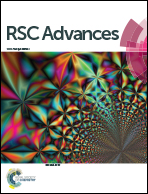Low-temperature catalytic decarboxylation of formic and acetic acid over a Ru/TiO2 catalyst: prospects for continuous production of energy-rich gaseous mixtures†
Abstract
Catalytic decarboxylation is a novel and promising pathway for continuous and efficient conversion of organic wastewaters. Stable conversion of acetic acid to CH4 and CO2 mixtures (T ≥ 225 °C, Sp > 80%, 70 h TOS) was demonstrated. Approaches for overcoming catalyst deactivation during production of H2-rich gas from formic acid are outlined.


 Please wait while we load your content...
Please wait while we load your content...